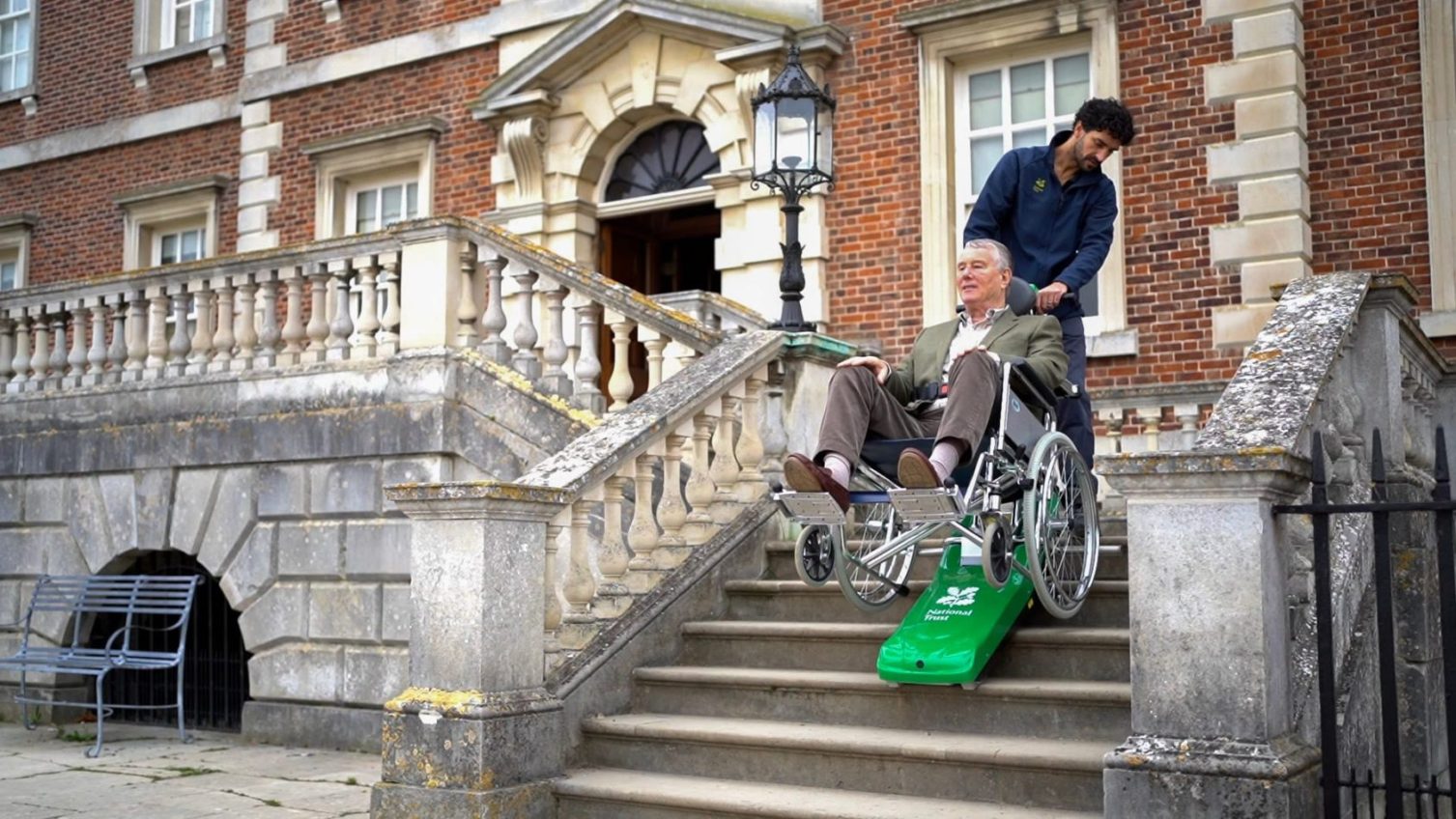
How accessible is your venue?
Did you know 63% of Britain’s top attractions are not fully accessible? Buildings should be accessible, even if it feels …
Stair climbers can play a vital role in improving wheelchair access to listed buildings, including iconic locations such as the Cruciform Building at UCL (University College London), by providing an alternative to traditional staircases without compromising the historic integrity of the building. Here’s how stair climbers can specifically help in this context:
Listed buildings are protected due to their historical and architectural value. Installing traditional lifts or other large accessibility features might be challenging or outright prohibited in these buildings. Stair climbers, which are more compact and portable, offer a way to maintain access for wheelchair users while minimising alterations to the original structure.
For historic buildings like the Cruciform Building, which might have multiple levels connected by narrow or ornate staircases, stair climbers allow wheelchair users to reach upper floors without needing to use a lift or expansive ramp systems that could disrupt the building’s aesthetics. This is especially crucial in a building that is already listed and where major renovations are often restricted.
Staircases in listed buildings are often not standard in design. Some may be winding, steep, or narrow. Stair climbers can be designed to accommodate these variations, making it possible to transport a wheelchair user up and down even non-traditional staircases. This ensures that all areas of the building remain accessible, regardless of the staircase layout.
In a listed building, large-scale alterations (such as adding a lift or significant ramps) may not be allowed, or could be very expensive. Stair climbers, especially portable ones, are a less intrusive solution. They can be added with minimal impact on the building’s existing structure, while providing vital accessibility for people with mobility challenges.
Using stair climbers to facilitate wheelchair access enhances inclusivity, allowing all users to access public spaces, attend lectures, or participate in activities in historic buildings like the Cruciform Building. This can promote greater social equality by ensuring that historical and educational institutions are accessible to everyone.
Many modern stair climbers are portable, meaning they can be moved from one staircase to another and stored away when not in use. This is ideal for buildings that may not need continuous accessibility solutions for every staircase. Additionally, stair climbers can be tailored to meet specific needs, whether it’s for narrow hallways or intricate stair designs.
Stair climbers are designed with safety in mind. They often come with features like secure harnesses for the user, smooth operation to prevent jolting, and built-in brakes. For listed buildings where preserving the safety of all visitors is crucial, these safety features ensure wheelchair users can ascend or descend stairs without undue risk.
For many universities, including UCL, budget constraints are an important factor when considering accessibility improvements. Installing a stair climber can be a more cost-effective solution compared to other more complex accessibility systems, such as installing a lift. This makes stair climbers an attractive option for institutions with limited funding for large-scale renovations.
In the case of the Cruciform Building at UCL, incorporating a stair climber would allow it to remain accessible to all while safeguarding its historic features, which are vital to its identity. A wheelchair user could navigate the building’s stairs with ease, helping UCL meet modern accessibility standards while respecting the heritage of the structure.